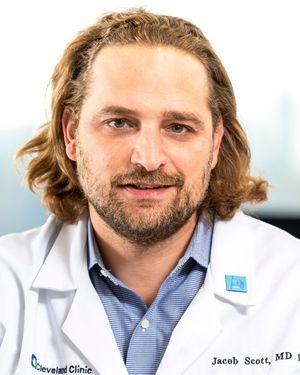Research News
06/11/2025
Evolutionary model for antibiotic resistance reveals dose timing critical to care
Using a form of evolutionary modeling called "seascape models," Cleveland Clinic researchers can predict what happens if you miss a dose of antibiotics.

Cleveland Clinic researchers are improving the way we use evolutionary modeling to understand drug resistance. The study, published in Science Advances, uses a new type of evolutionary model called a “fitness seascape” to incorporate a patient’s dosage schedule into models that predict whether an infection will develop antibiotic resistance, and has found that inconsistent timing and missing early doses can lead to treatment failure.
Dr. Scott’s team, including study first author Eshan King, an MD/PhD student at Case Western Reserve University School of Medicine, is refining models that determine recommended antibiotic doses by incorporating bacterial evolutionary dynamics.
“The world is reaching a crisis point with the rise of ‘superbugs,’ or antibiotic-resistant bacterial infections,” says the study’s senior author Jacob Scott, MD, DPhil. “We’ve already seen from MRSA what can happen if a bacterium becomes antibiotic-resistant. We need to address the problem before it impacts our ability to use antibiotics in more routine aspects of medical care, like surgery or childbirth.”
Building seascape models to empower evolutionary modeling
Doctors typically use guidelines from drug companies to decide medication dosages for their patients. These guidelines rely on equations that describe how antibiotics are absorbed in the body to calculate the smallest effective dose that treats the disease, without letting the diseased area evolve a drug-resistant mutation. Under Dr. Scott’s mentorship, King has been expanding some of these models to better reflect how changes in a medication’s concentration in our bloodstream affect treatment resistance.
"Many models assume the environment around a diseased area doesn't change, but the environment of an infection is our own bodies. That’s never truly constant,” King says. “Our manuscript builds on previous work to account for changes in drug concentration over time within our bodies.”
Seascape models are equations that include variables that change over time or space, like drug concentration. This allows investigators like King to study new aspects of antibiotic resistance, like how the timing between doses influences medication levels in diseased areas. King used seascape modeling to simulate the outcomes of hundreds of virtual patients being treated for bacterial infections with IV and oral antibiotics.
“Other models have drug concentration as an input, and evolutionary outcome (treatment resistance) as an output. Instead of testing different drug concentrations in separate patients, our model lets us kind of turn a dial to change concentrations in one patient over time to better reflect how our bodies process drug doses,” Dr. Scott explains.
Medication timing influences antibiotic resistance
Before this study, missing a dose or stopping antibiotics treatment early was emphasized as a main contributor to treatment resistance. King was surprised to find simulated patients who developed treatment resistance were taking roughly the same amount of medication as those who successfully eliminated their infection.
Instead of the presence or absence of medication at all, it was the timing of the medication doses that differed between these two groups. The team found that missing or being late with early doses played a bigger role in developing antibiotic resistance than missing or being late with a later dose.
The team tested these findings in the lab by treating bacteria with different antibiotic regimens. The bacteria that received all the recommended dose at the recommended time were unlikely to develop treatment resistance. Similarly, bacteria that were appropriately received the early doses but missed later doses did not develop resistance. In contrast, the bacteria that missed early doses but were appropriately treated later evolved treatment resistance, highlighting a potential mechanism of treatment failure in a patient.
"These results are shaping how I will counsel my patients,” King says. “I will emphasize that they really need to be on top of taking their antibiotics at the recommended time intervals, especially at the beginning. If they take the first dose and then miss the second dose and then take the third dose, that might not work out so well. There is a higher likelihood that this treatment will fail, and we will have to try something else."
Featured Experts
News Category
Related News
Research areas
Want To Support Ground-Breaking Research at Cleveland Clinic?
Discover how you can help Cleveland Clinic save lives and continue to lead the transformation of healthcare.
Give to Cleveland Clinic